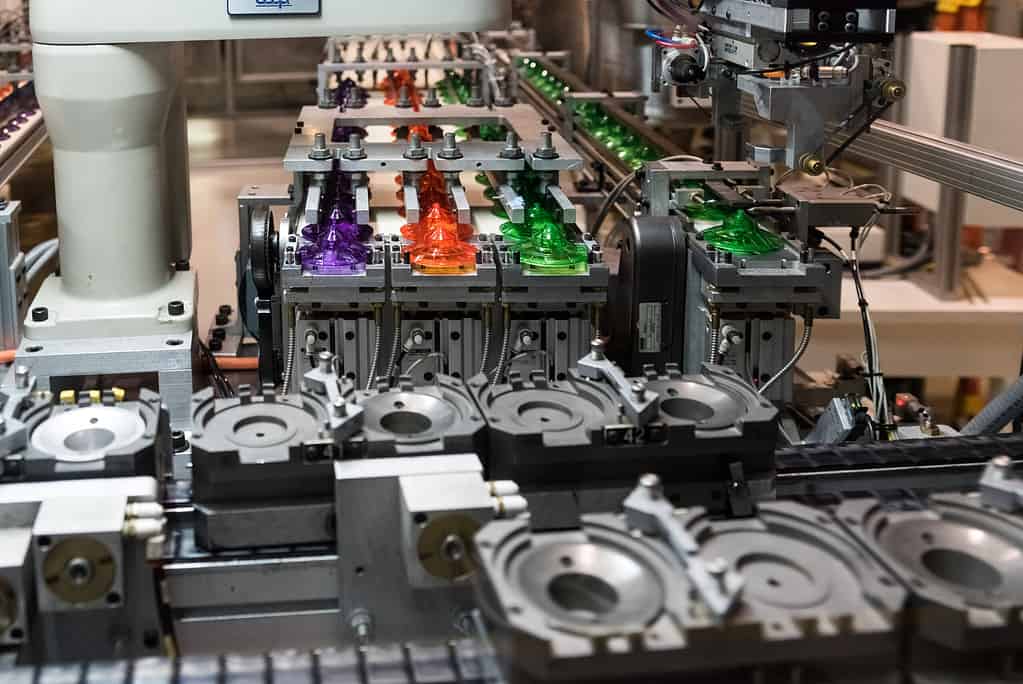
Takt Time vs. Cycle Time: when do you choose what to use? Regardless of your processes’ efficiency, you will have to measure the time eventually. Now, if you’re a new Six Sigma practitioner, you might be wondering about Takt Time vs. Cycle Time. Both of these metrics are important to understanding and refining your processes. So, let’s dive right in and get down to brass tacks on how these work.
What is Takt Time?

Takt Time refers to the speed at which a product must be manufactured to meet customer demand.
The Benefits of Takt Time
Implementing Takt Time into your organization is beneficial for several reasons:
- Identifying bottlenecks – If an organization is making Takt Time a priority, bottlenecks tend to be spotted quickly. Processes that could be slowing the production line are more easily identified.
- Underperforming employees – A focus on Takt Time helps to be able to spot employees who are underperforming.
- Waste elimination – Emphasizing Takt Time helps to eliminate waste and puts a focus on work that is value-added.
- Instills routine – An awareness of Takt Time tends to instill routine into a production line. This enables faster operations and the production of more output.
How to Calculate Takt Time
To calculate Takt Time, you will divide the available production time by customer demand. Available production time means the time available to build a product. Subsequently, this excludes any time spent on breaks, maintenance, or changeovers.
For example, if workers are available for 7.5 hours or 450 minutes of an 8-hour shift. Your client wants 150 units completed in a day, the Takt Time is 3 minutes.
Takt Time = available production time/customer demand
= 450 minutes / 150 units
= 3 minutes per unit
What is Cycle Time?
Cycle time can be defined as the actual amount of work time needed to complete a single task.
The Benefits of Cycle Time
Increased profitability – By maximizing cycle time, you can increase profitability and cut down on your costs. By understanding exactly how time is spent, you can know where cutbacks can be implemented.
- Consistent Production: When you have a firm grip on your processes by putting a focus on things like Cycle Time, you can have more efficient and consistent production.
- Realistic timelines: In understanding Cycle Time, you are better equipped to give more realistic timelines to employees. This means avoiding disappointment and increasing customer satisfaction.
- Addressing inefficiencies: Data that comes from assessing Cycle Time allows you to spot and address any potential inefficiencies.
- Better Project Scoping: If you do not have a solid understanding of the time needed by your team to complete a task, you are unable to accurately scope work for your customers.
- Outpace the Competition: Using the data that comes from your Cycle Time allows you to have the chance to put your company at an advantage. Further, you’re able to make adjustments to stay ahead of the curve with the shortest possible production time.
How to Calculate Cycle Time
To calculate Cycle Time, you will be dividing net production time (NPT) by the number of units produced. Net production time is the production time when any breaks or downtime are stripped away.
Cycle Time = NPT / number of units produced
For example, if it takes 80 minutes to produce 20 units, the Cycle Time per unit is 4 minutes.
Takt Time vs. Cycle Time: What’s the Difference?

Takt Time refers to the amount of time a product needs to be manufactured to satisfy demand, while Cycle Time refers to the amount of work time it takes to create a product. These two terms are related, but they can be out of sync with one another. For example, you can have a Takt Time of two days to be ahead of backorders but have a Cycle Time of three days needed to complete the job.
To offer the best service to your customers, your Cycle Time should agree with your Takt Time or even be a bit ahead of it.
When Do You Use Takt Time and/or Cycle Time?
Takt Time and Cycle Time would be used by the same organizations. It is just as important to know the demands of the customer as it is to know the real-world time that it takes for the work to be done. If Cycle Time exceeds the Takt Time, it is important to look at the processes involved in production. You’ll want to do this to see if there are adjustments that can be made to rise to the occasion.
It is also important to be forthright with the customer if the Takt Time is too far off from the Cycle Time. Such measurements are important for completing the order in the time demanded to be realistic. If the Takt Time exceeds the Cycle Time by a significant degree, it could allow your employees to work at a more relaxed pace or to be able to fit in other orders.
In The News
We often think of Takt Time as something repeatable, like any task in manufacturing. However, a recent research paper authored by Joonas Lethovaara and others has taken a closer look at Takt Time in the context of non-repeatable tasks during construction. By decentralizing the decision-making and using Takt Time throughout, they’ve found that production flow is far more robust than other methods.
Cycle Time is one area where companies would love to shave off where they can. To this end, it’s fascinating to see the efforts where time can be saved in manufacturing. Take this article by PES for example. The adoption of a new Brother VMC has resulted in huge amounts of time saved during production.
Other Useful Tools for Customer Satisfaction
While these concepts are valuable for addressing your customer’s needs, they are only one part of the whole. Understanding how repeatability and precision differ can make your processes efficient while still embodying the ideal quality modeled throughout the Six Sigma methodology.
Further, there are some things you simply can’t control during production. As such, having an OCAP is paramount. These plans are valuable because they let you account for possibilities that simply aren’t on the table when you’re looking at things like Takt Time and Cycle Time.
Summary
Having a firm understanding of both Takt Time and Cycle Time is extremely important for doing good business. Being able to keep these two times in sync with one another makes for happy customers. Happy customers are likely to keep coming back.
If you find that the Takt Time and Cycle Time are not lining up, you will need to look at your processes to see where improvements can happen in the Cycle Time. Otherwise, you will have to turn down the orders if the Takt Time is simply unrealistic. This is important to keep in mind when compared to how much time it takes to make each unit.